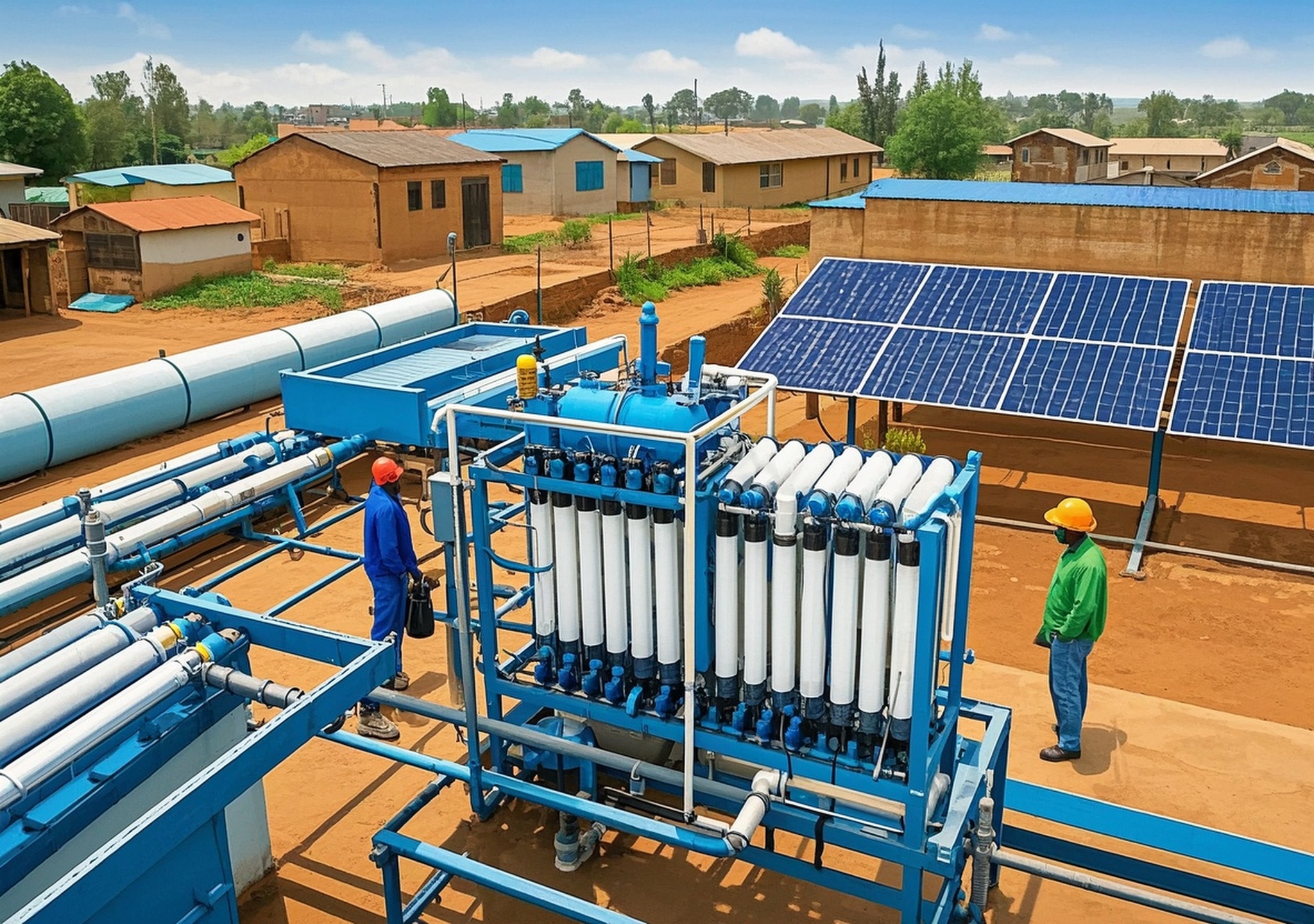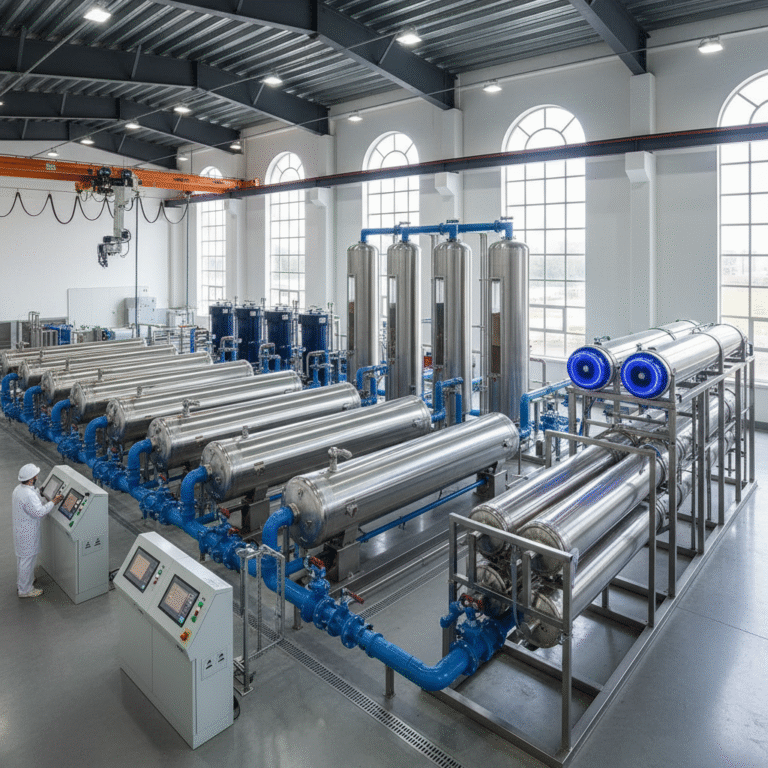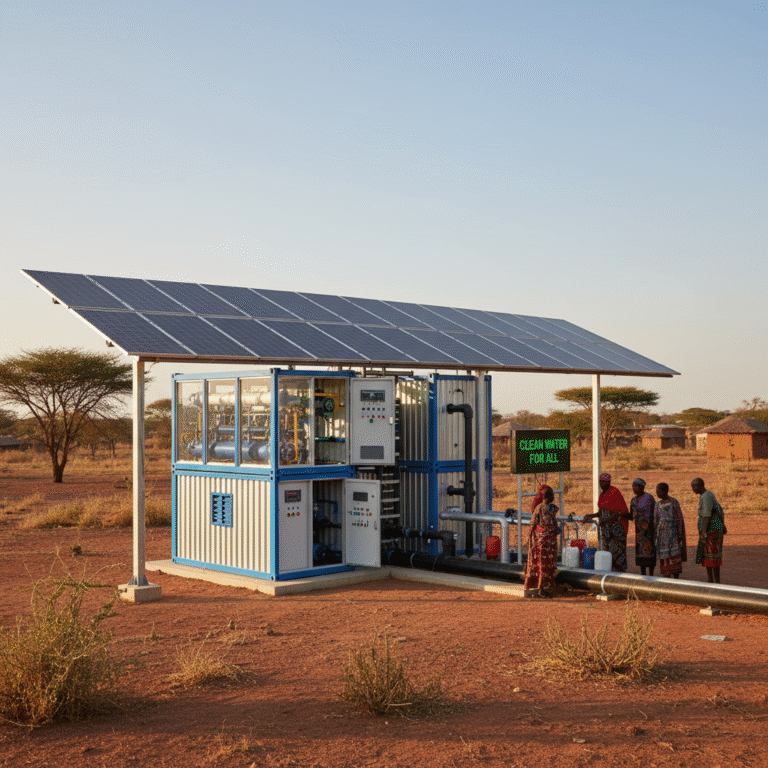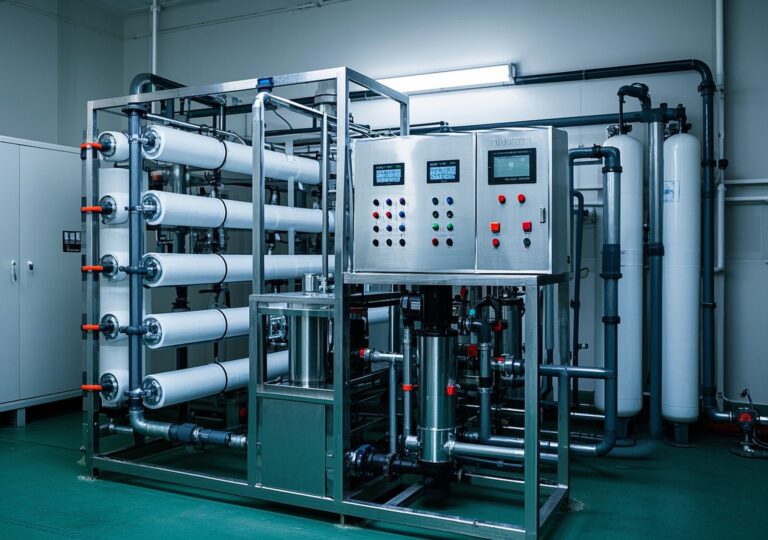Curious Cases in Africa: Our Experience with Ultrafiltration Systems

Curious Cases in Africa: Our Experience with Ultrafiltration Systems
Introduction: Water Challenges and Ultrafiltration’s Promise in Africa
In many regions across Africa, access to clean and safe drinking water remains a formidable challenge. Rapid population growth, coupled with climate variability and limited infrastructure, has resulted in water scarcity affecting millions. Contaminated water sources lead to widespread health issues, including waterborne diseases that hinder social and economic progress. Addressing these challenges requires innovative, reliable water treatment technologies tailored to local conditions.
Over the past decade, our work deploying ultrafiltration systems in African water treatment plants has showcased the technology’s potential to revolutionize water purification. Ultrafiltration (UF) membranes provide a robust barrier against microbial contaminants, suspended solids, and some larger organic molecules, ensuring potable water meets stringent quality standards. The adoption of such membrane technologies not only supports public health initiatives but also fuels local economies by providing a stable water supply for households, agriculture, and industry.
Our experience has revealed fascinating cases where UF systems effectively transformed problematic water sources into safe drinking water. These stories highlight both the technical and social nuances of implementation in challenging environments. In this article, I will share insights gained from these projects, supplemented with authoritative data to outline the practical advantages and critical design considerations of ultrafiltration systems.
Overview of Ultrafiltration and Related Water Treatment Technologies
Ultrafiltration belongs to a family of membrane filtration methods characterized by their pore sizes ranging from approximately 0.01 to 0.1 microns. This allows UF membranes to physically remove bacteria, viruses, and suspended particles without the use of chemicals, making it an environmentally friendly choice.
Technologies commonly integrated in water treatment include:
– **Microfiltration (MF):** Slightly larger pore sizes than UF, primarily removing suspended solids and some bacteria.
– **Ultrafiltration (UF):** Targets bacteria, viruses, and colloidal particles; an effective pre-treatment before finer processes.
– **Nanofiltration (NF):** Removes divalent ions, small organic molecules, and some salts.
– **Reverse Osmosis (RO):** Provides almost complete removal of dissolved solids, including salts and many contaminants.
– **Electrodialysis (ED):** A membrane process used to remove ionic species and salt from water.
Ultrafiltration systems excel in potable water treatment due to their high flux rates, low operational pressures, and reliable microbial barrier function. Functional components typically include:
– Hollow fiber or flat sheet membranes arranged in modules.
– Automated backflushing and chemical cleaning systems to maintain membrane performance.
– Pre-treatment units such as sand filters or coagulation for optimal feedwater quality.
Illustration Placeholder: Diagram of Ultrafiltration Process in Water Treatment
The compact nature and modular design of UF systems enable flexible scaling from small rural communities to large urban plants.
Water Resource Challenges and Market Demand in Africa
Geographically, many parts of Africa face arid to semi-arid climates restricting surface water availability. Regions like the Sahel, Horn of Africa, and parts of Southern Africa experience seasonal variability, prolonged droughts, and groundwater contamination. These physical constraints combined with infrastructural deficits necessitate reliable purification technologies to tap into diverse water sources – including surface water, groundwater, and reclaimed wastewater.
Our observations confirm that residents in affected areas rely heavily on unsafe water sources, leading to a high incidence of diarrheal diseases and other infections. The pressing need for safe water has driven demand for cost-effective, low-maintenance technologies able to deliver consistent quality.
In this context, ultrafiltration systems are uniquely positioned because:
– They can treat turbid surface waters with fluctuating quality.
– Their microbial removal performance meets or exceeds drinking water safety standards.
– Modular structures accommodate varying community sizes.
– Operation requires less chemical input, reducing environmental impact.
Moreover, the expanding African industrial sector demands high-quality water for manufacturing, food processing, and mining operations. UF technology’s ability to function as pretreatment for reverse osmosis or standalone treatment supports industrial sustainability goals.
Drinking Water Standards and Treatment Process Design
Ensuring treated water complies with health regulations is fundamental. While African countries have diverse regulatory frameworks, international benchmarks such as those set by the World Health Organization (WHO) and national standards like South Africa’s SANS 241 provide clear guidelines for microbial and chemical water quality parameters.
The integration of ultrafiltration systems supports achievement of these standards by providing:
– Reliable physical removal of bacteria, protozoa, and most viruses as a membrane barrier.
– Consistent turbidity reduction, improving water clarity.
– Compatibility with post-treatment disinfection processes to ensure residual protection.
A typical treatment sequence incorporating UF includes:
1. Raw water intake and coarse screening.
2. Pre-treatment (e.g., coagulation, sedimentation, sand filtration).
3. Ultrafiltration membrane separation.
4. Disinfection (e.g., chlorination, UV).
5. Distribution to consumers.
By removing microbial contaminants effectively, UF systems reduce dependence on high chemical dosages, minimizing disinfectant by-product formation, and improving taste and odor profiles.
According to the ANSI/AWWA B112-19 standard, which sets minimum requirements for ultrafiltration systems used in potable water treatment, these membranes serve as a critical microbial barrier and assist operators in designing reliable, validated systems meeting federal drinking water criteria (American National Standards Institute, 2019).
Customized Solutions and Engineering Design in African Contexts
One major lesson from our projects is the importance of tailoring system design to local needs and constraints.
For example, in a medium-sized East African town, we implemented a UF-based treatment plant with the following features:
– A three-stage pre-treatment train including coagulation-flocculation improving membrane longevity by reducing fouling.
– Redundant membrane skids allowing uninterrupted operation during maintenance.
– Remote monitoring and automated cleaning cycles managed by local technicians with minimal training.
– Solar-powered control systems addressing unreliable grid supply.
This setup delivered a treatment capacity of 1,000 cubic meters per day, reliably reducing turbidity from >100 NTU to below 0.2 NTU, with zero reported microbial breakthrough over two years.
In another instance serving a rural community, a skid-mounted ultrafiltration unit was customized for intermittent power supply and significantly lowered the incidence of diarrheal diseases by 40% within the project’s first year. The compact design allowed rapid deployment and ease of transport to remote locations.
Designing robust pretreatment, softening stages, and integrating continuous water quality sensors enhance overall process reliability and performance. Training local operators ensures sustained benefits and builds community ownership.
Engineering Detail Table: Design Parameters for UF Systems in Different African Settings
| Parameter | Urban Plant | Rural Community Unit |
|---|---|---|
| Capacity (m³/day) | 1,000 | 100 |
| Pre-treatment | Coagulation + Sand Filtration | Simplified Cartridge Filtration |
| Membrane Type | Hollow Fiber UF Modules | Flat Sheet UF Modules |
| Cleaning Frequency | Monthly CIP (Clean-in-Place) | Quarterly Manual Cleaning |
| Power Source | Grid + Solar Backup | Solar + Battery |
Case Studies and Benefits Realized
During a multi-year project in West Africa, we observed how ultrafiltration effectively addressed waterborne outbreaks caused by fluctuating river contamination during rainy seasons. By retrofitting existing sand filtration plants with UF membranes, the community saw:
– A decrease in turbidity from >80 NTU to <0.3 NTU. - E. coli and Giardia cyst removal above 99.99%. - Reduction of cholera incidence by 60% over three years. The economic impacts were significant: reduced healthcare costs, improved school attendance, and increased productivity. Local stakeholders gained confidence in the water supply, encouraging investments into community development. Another intriguing example comes from a semi-arid region where reclaimed wastewater was treated via ultrafiltration before irrigation and limited potable reuse. The system’s robustness ensured stable operations even under highly variable feedwater quality, setting a precedent for sustainable water resource management in water-stressed African countries.
Conclusion and Call to Action
Our extensive work with ultrafiltration systems in Africa demonstrates their vital role in transforming water treatment landscapes. By combining advanced membrane technology with tailored engineering design and local engagement, these solutions deliver safe, reliable drinking water despite resource constraints.
We encourage water authorities, NGOs, and private sector partners to explore ultrafiltration adoption as part of integrated water safety plans. Collaborating with technology experts facilitates customized designs, efficient operations, and long-term sustainability.
Please contact us to discuss your specific water challenges and explore proven, cost-effective ultrafiltration solutions aligned with your goals. Together, we can improve public health, boost economic development, and build resilient water systems for Africa’s future.
Reference:
American National Standards Institute (ANSI). (2019). ANSI/AWWA B112-19 Microfiltration and Ultrafiltration Membrane Systems. AWWA. This standard establishes minimum requirements and best practices for ultrafiltration membrane systems used in potable water and reclaimed water filtration, emphasizing performance, design, and regulatory compliance.




